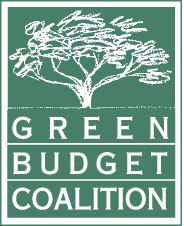Recommendation Summary:
To support implementation of the National Adaptation Strategy (NAS), the Green Budget Coalition recommends scaling up federal core adaptation investments by an order of magnitude, from $6.5 billion over the past eight years to:
At least $65 billion over the next eight years (2025-2033) for core adaptation programs [NRCan, HICC, ECCC, HC, CIRNAC, and other departments]
Background and Rationale
The National Adaptation Strategy, finalized in June 2023, outlines a path for improving climate change resilience in Canada across five interconnected systems: disaster resilience, health and well-being, nature and biodiversity, infrastructure, and economy and workers.
Over the past eight years (2015-2023), federal investments in core adaptation—programs and initiatives designed to directly enhance adaptation— have totalled more than $6.5 billion. This includes $1.6 billion in new funding announced in November 2022 when the draft NAS was published, which was described at the time as a “down-payment”.
However, as noted in the Canadian Climate Institute’s 2022 independent assessment of the draft NAS and $1.6 billion down-payment, “The scale of new action and investment proposed in the Action Plan is inadequate to address the growing national adaptation shortfall.” While some additional funding has been announced since, funding for the NAS remains insufficient, and could be reduced if sunsetting programs supporting adaptation are not renewed in Budget 2025.
Meanwhile, a 2020 analysis by the Insurance Bureau of Canada and the Federation of Canadian Municipalities, which focused on the cost of local- level actions for public infrastructure needs alone,estimated that “an annual investment in municipal infrastructure and local adaptation of $5.3 billion is needed to adapt to climate change.”
Scaling Up Investments to Date and Addressing Gaps
Existing programs and initiatives, such as those identified in the ECCC Backgrounder, Funding climate change adaptation (June 2023), can be rapidly expanded and/or scaled up.83 Priorities identified by Climate Proof Canada include:
- Expanding the Greener Homes Initiative and Greener Neighbourhoods Pilot Program to integrate resilience objectives, support deep retrofits and accelerate decarbonization;Delivering surge funding to the Disaster Mitigation and Adaptation Fund (DMAF);
- Supporting Indigenous Climate Resilience for First Nations, the Métis Nation and Inuit Peoples;* and
- Expanding the HealthADAPT program in order to help the health sector prepare for and respond to climate impacts.
Additional priorities for new core adaptation investments to address gaps in current funding streams include:
- An affordable National Flood Insurance Program to protect households;
- Targeted programs for people with health conditions and disabilities, racialized communities, older people, and other marginalized and underserved populations particularly vulnerable to climate change;
- Resources to advance equity and climate and environmental justice (a guiding principle of the NAS) across all core adaptation investments;
- Integrating measures to promote adaptation of forests, grasslands, wetlands and aquatic ecosystems in restoration and protection plans;
- Addressing flooding and erosion at a watershed scale that goes beyond municipal and/or jurisdictional boundaries with a focus on natural infrastructure solutions, and including regional collaboration of watershed health monitoring, and assessment of hydrology to manage flow regimes during periods of sporadic precipitation; and
- Targeted support for local governments to access predictive tools such as flood maps, and disaster-mitigation funding.
Important Complementary Actions
Effective coordination and engagement mechanisms will be essential to the success of Canada’s NAS and also require resourcing.
All federal infrastructure funding programs need to be brought into alignment with the NAS. Housing, Infrastructure and Communities Canada’s updated climate lens should be rigorously applied to all federal infrastructure investments. There is also a need to improve coordination and coherence among federal programs for disaster risk reduction/response and climate adaptation, as recommended in 2022 by the Expert Advisory Panel on the Disaster Financial Assistance Arrangements (DFAA). Strategically targeting DFAA funding to prioritize climate adaptation will help increase disaster resilience.
In addition to core adaptation investments, funding for disaster response and recovery and other programs that include adaptation as a secondary outcome will continue to be important.
See also recommendations for additional investments in the following adaptation-relevant programs, detailed elsewhere in this document: earlier, in Delivering on Nature Commitments; and later, in the more detailed nature section: Aquatic Ecosystem Restoration Fund; Habitat Infrastructure Renewal Fund; and Indigenous- led conservation in Enhanced Nature Legacy Renewal.
* The Green Budget Coalition supports the request of the Métis Nation for emergency management funding.

